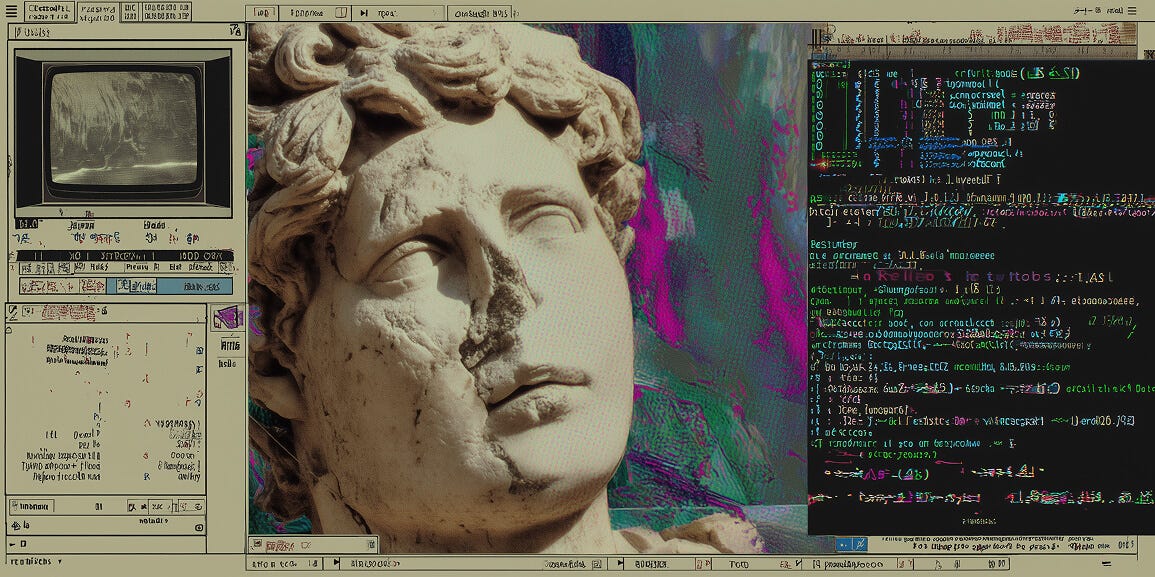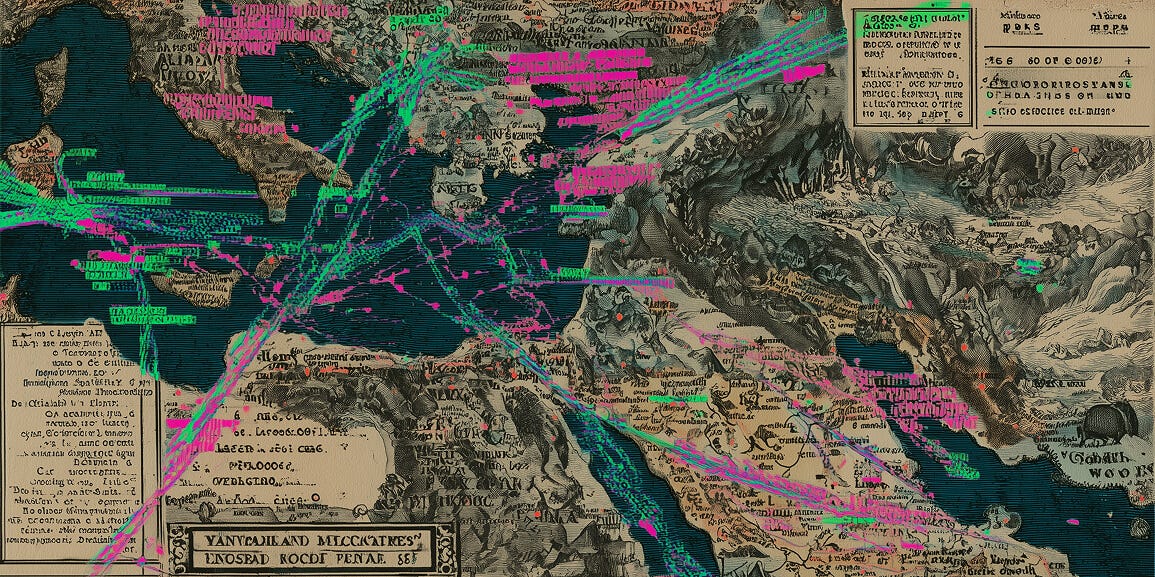From Priest-Kings to a16z: Why Governance is the Newest Asset Class
The multi-trillion dollar market for sovereignty is finally open
404Embassy://Transmission_Log_#7
Signal_Source: Ray Svitla // svit.la
Status: Broadcasting...
Let’s start with a number that feels like a fossil.
In 1921, the entire budget for the League of Nations – humanity’s first global governance beta test – was about $1.5 million. In today’s money, that’s roughly $28 million. This was the world's seed investment in a new international order, a line item on the balance sheets of incumbent nation-states.
Now for a number that’s alive. At the time of writing, the collective treasuries of DAOs, tracked by DeepDAO, hold $18.4 billion.
Before you call bullshit on the comparison, let’s be clear: this is not a direct, apples-to-apples comparison. The League's budget was operating expense. DAO treasuries are a new kind of beast entirely – a mix of liquid assets, vesting tokens, and protocol-owned capital. It's the AUM of digital economies, not a P&L statement.
To get stuck on accounting is to miss the tectonic signal. This isn't just a bigger line item; it's the emergence of a new type of capital formation. We've shifted from tens of millions in a state-controlled fund to tens of billions in community-controlled, software-managed sovereign wealth.
The monopoly on funding the future of governance is broken. It has become an asset class.
The Evolution of the "Lead Investor" in Governance R&D
To understand where we're going, you have to understand who used to write the checks. The role of "Lead Investor" in governance has evolved, and each phase was a bet on a new technology for social scaling.
1. The Priest-King as Angel Investor (c. 10,000 BCE)
The first governance "startups" were Neolithic settlements. Their lead investors were chieftains and priest-kings. Their seed capital wasn't gold; it was grain surplus, which they used to fund "specialists" – scribes, soldiers, priests. Their CapEx was pyramids; their ROI was divine right and a stable social order. Their thesis: centralized authority, backed by religious cosmology, was the killer app for escaping chaos.
2. The Emperor as Institutional Fund (c. 500 BCE - 1500 CE)
Empires like Rome and Han China were the first institutional funds for governance. Their "LPs" were the conquered taxpayers. They invested this capital into scaling infrastructure: roads, aqueducts, and the most critical innovation of all: a professional bureaucracy.
This wasn't just about hiring scribes; it was the invention of the software for running an empire. They created a replicable model of centralized power projection. The scale itself was the product. With a core administrative body of around 30,000 managing an empire of 60 million, they established the enduring template for supranational control – a ghost of which you can still feel in the corridors of Brussels today.
3. The Nation-State as the Incumbent Monopoly (c. 1648 - 2008)
The nation-state was the most successful governance startup of the last 500 years. It raised its "Series A" through revolutions. Its key innovation was the bundling of services – identity, security, law, and welfare – all backed by the ultimate competitive advantage: a monopoly on legitimate force. But like any monopoly, it became slow and risk-averse, its R&D budget ossified in bureaucracy.
4. The VC & The Crowd as the New Lead (c. 2009 - Present)
Enter the new lead investors. First, it was "philanthropists" like Peter Thiel funding radical experiments like the Seasteading Institute. Now, it's institutional venture capital. Firms like a16z and Pronomos Capital are writing checks to build new governance models. And the decentralized crowd, through DAOs, is collectively funding and governing treasuries worth billions. Their thesis is simple: the nation-state is a legacy system. The new stack is being built with code, capital, and community. Their ROI is no longer just control or legitimacy, but efficiency, exit-potential, and ideological freedom.
Why Now? The Great Unbundling of the State
This shift isn't accidental. It’s driven by three powerful forces converging at once.
The Collapse of Coordination Costs: What the printing press did to the Church's monopoly on information, the internet and blockchain are doing to the state's monopoly on governance. The cost of forming a global community, managing a treasury, and enforcing rules via smart contracts has fallen to near-zero.
The Trust Recession: Public trust in government is in freefall. This isn't sentiment; it's a quantifiable market opportunity. Globally, government is the least trusted institution at 52% (Edelman). Across the West's richest nations, a 44% plurality now distrust their own state (OECD). In the U.S., the 70% trust of the 1960s has imploded to just 22% (Pew Research). When customers (citizens) are fundamentally dissatisfied with the incumbent provider, they actively seek alternatives.
Capital Seeking Asymmetric Upside: Governance is the largest market in the world, valued in the trillions. And it has seen virtually no fundamental innovation in a century. For a VC, this is the ultimate TAM (Total Addressable Market). The potential return on successfully launching a single new city-state or a globally adopted protocol is astronomical. It's the ultimate platform play, and capital is finally waking up to it.
If you find this analysis valuable, consider subscribing for more signals on the future of sovereignty.
The Term Sheet for Society
For centuries, the terms of our social contracts were dictated by conquest and revolution. Today, they are being drafted in Discord channels, ratified on-chain, and funded by venture capital. The new marketplace is already a gradient of ambition, following a clear path from digital tools to physical land. We see it in the explosion of modular protocols that function like an "AWS for governance"; in the real-world experiments of charter cities offering Jurisdiction-as-a-Service; and in the full-stack vision of building new nations from the cloud down.
Of course, this is not a utopia. The code is buggy. This new world of on-chain governance is grappling with its own demons: plutocracy in voting, the apathy of token holders, and the constant tension between ideological mission and raw financial speculation. The hardest R&D isn't just about finding product-market fit; it's about designing systems with soul, mechanisms that are resistant to capture and serve their communities.
But this is a profound change. For the first time, the principles of iteration, A/B testing, and rapid prototyping are being applied to our most important technology: how we live together. The R&D has been de-risked by millennia of failed states. The technology is here. The capital is flowing.
The question is no longer if governance will be disrupted, but who will be on the cap table. In this new great game, we each have a role. You can be the architect, designing the protocols. You can be the pioneer, joining a new community. Or you can be the investor, writing the check that funds a new piece of the world. Your world.
Which role will you choose?
If this post resonated with you, share it with your network. The best ideas spread when we build in public.
stay sovereign,
stay evolving 🐌
Ray Svitla







Цікавы погляд на змены. Дзякуй што дзелішся думкамі 👍🏻
Your description of artificial government as an asset class is fresh and motivating. By the end, it's obvious that something can and must be done to improve our political situations. The roiling disaster of the deep and centralized states devours man and Earth alike.
An important point need attendance.
Yes, our overt governments are technologies. They are artificial, delicate, changeable. However, living together as such is an instinct, not a technology. Man is a social and especially gregarious animal.
This means we have a natural government—a way to control the use of force amongst ourselves. We use it all the time, whether alone or with company. We rarely think of it as government. But it works. It is muted but present. We lack only the biological capacity to engage in it fully.
Mutedness and incapacity results from unhealed mass major trauma. We experience it now as the routine brutality of civilization. It started with a global cataclysm over 10,000 years ago.
The problem is both worse and easier to solve than you describe. It cannot be touched by any conscious activity like business or politicking in any form.
But it it can heal by itself under certain conditions. And natural government becomes more understandable, visible, and functional as the process deepens. The need for artificial government recedes.
All of this is summarized in 10 minutes here:
dub.sh/hdro
Point 2 of the strategy is about the way nature gives us to heal from major trauma and leads to my book about it.
Thanks.